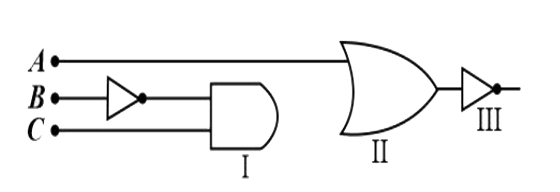Charge distribution in iodine monochloride is best represented as
I+Cl+
IδClδ−
I−Cl+
Iδ−Clδ+
The correct Answer is:B
To determine the charge distribution in iodine monochloride (ICl), we need to analyze the electronegativity of the atoms involved and the nature of the bond formed between them.
1. Identify the Elements:
- Iodine monochloride consists of two elements: iodine (I) and chlorine (Cl).
2. Understand Electronegativity:
- Electronegativity is the tendency of an atom to attract electrons towards itself in a bond.
- In the periodic table, electronegativity generally increases across a period and decreases down a group.
3. Compare Electronegativity of Iodine and Chlorine:
- Chlorine (Cl) is more electronegative than iodine (I).
- Typical electronegativity values: Cl ≈ 3.16 and I ≈ 2.66.
4. Determine the Nature of the Bond:
- Since chlorine is more electronegative than iodine, the bond between I and Cl will be polar covalent.
- In a polar covalent bond, electrons are not shared equally; they are pulled closer to the more electronegative atom.
5. Assign Partial Charges:
- Due to the difference in electronegativity, chlorine will have a partial negative charge (δ-) because it attracts the shared electrons more strongly.
- Iodine will have a partial positive charge (δ+) as it has a weaker attraction for the shared electrons.
6. Represent the Charge Distribution:
- The charge distribution in iodine monochloride can be represented as:
- I (δ+) — Cl (δ-)
7. Conclusion:
- Therefore, the charge distribution in iodine monochloride is best represented with iodine having a partial positive charge and chlorine having a partial negative charge.
Final Answer:
The charge distribution in iodine monochloride (ICl) is best represented as I (δ+) — Cl (δ-).
- Iodine monochloride consists of two elements: iodine (I) and chlorine (Cl).
- Electronegativity is the tendency of an atom to attract electrons towards itself in a bond.
- In the periodic table, electronegativity generally increases across a period and decreases down a group.
- Chlorine (Cl) is more electronegative than iodine (I).
- Typical electronegativity values: Cl ≈ 3.16 and I ≈ 2.66.
- Since chlorine is more electronegative than iodine, the bond between I and Cl will be polar covalent.
- In a polar covalent bond, electrons are not shared equally; they are pulled closer to the more electronegative atom.
- Due to the difference in electronegativity, chlorine will have a partial negative charge (δ-) because it attracts the shared electrons more strongly.
- Iodine will have a partial positive charge (δ+) as it has a weaker attraction for the shared electrons.
- The charge distribution in iodine monochloride can be represented as:
- I (δ+) — Cl (δ-)
- Therefore, the charge distribution in iodine monochloride is best represented with iodine having a partial positive charge and chlorine having a partial negative charge.
The charge distribution in iodine monochloride (ICl) is best represented as I (δ+) — Cl (δ-).
Similar Questions
Knowledge Check
The given pyramid best represents
 APyramid of energy in forest ecosystemBpyramid of biomass in forest ecosystemCpyramid of numbers in grassland ecosystemDpyramid of numbers in forest ecosystem.
APyramid of energy in forest ecosystemBpyramid of biomass in forest ecosystemCpyramid of numbers in grassland ecosystemDpyramid of numbers in forest ecosystem.The structure of (S)-2-fluorobutane is best represented by:
ACH3C∣FHCH2CH3B C
C D
D
Variation of electric potential due to npn-conducting (positively charged) solid sphere with distance from its centre is best represented as
View SolutionThe H-bonds in solid HF can be best represented as :
View SolutionA monosomic organism can best be represented
View SolutionThe H-Bonds in solid HF can be best represented as :
View SolutionThe outpout Y of the logic circuit shown in figure is best represented as

View SolutionDistribution of fraction of molecules with velocity is represented in the figure

Velocity corresponding to point X is
View Solution
